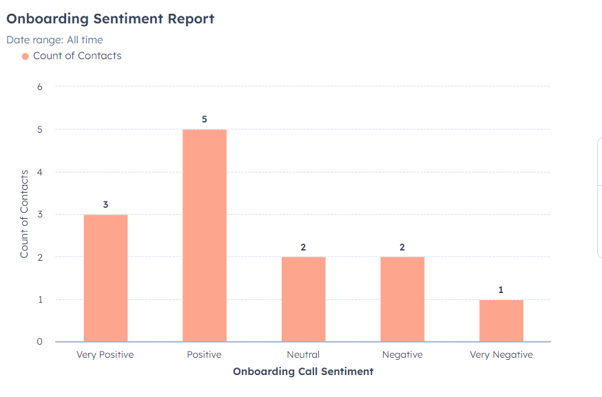Customer onboarding is a vital, but often overlooked, business function and therefore often under-reported on. This could be down to numerous reasons but one that stands out is that businesses often don’t attribute onboarding success to revenue.
According to WyzOwl, 86% of people say they’d be more likely to stay loyal to a business invested in onboarding content that welcomes and educates them post-purchase. That’s a staggering amount of users that could be under-valued and ripe for churn due to a poor or ill-thought out onboarding experience.
So why are businesses not focussing on a successful onboarding experience? More importantly, why are they not reporting effectively on it either?
In this article, we explore the state of customer onboarding, discuss some potential insight as to why businesses overlook onboarding (and the consequence) - and present strategies and reporting ideas to help improve onboarding effectiveness so your high-value customers don’t fall out of love with your product before they’ve even started.
The state of customer onboarding
Although businesses tend to understand the importance of onboarding, they often fall short in the execution. With HubSpot reporting that 88% of service leaders believe customer expectations have increased, failing to onboard customers properly can adversely affect revenue. So much so, during the digital onboarding process, the average time after customers abandon their application is 14 minutes and 20 seconds, according to Visa.
There’s a litany of reasons that primarily SaaS businesses are ineffective in this area but it boils down to one key idea: most creators believe that their customers will naturally appreciate the product as much as they do.
This misconception is an easy one to adopt but also easy to remedy. Leaving customers to ‘enjoy’ the product often leaves them with too many actions to get the most value from your product. You can get users to adopt the product more effectively with a more strategic approach to customer onboarding.
That’s why you should start looking into and measuring time-to-value (TTV) metrics. TTV value metrics calculate the amount of time a customer realises the value of a product after initial adoption.
By taking note of these metrics, SaaS companies can quickly enhance the user onboarding experience and increase the likelihood of long-term users. But how can you get to this stage? By focusing on core features, providing immediate value with in-app push notifications to popular features, ensuring clear communication by utilising your customer success function and leveraging the product in a personalised manner to the user, you will begin to see the TTV drop and the increase in users past the ‘freemium’ stage increase.
For more information about TTV, explore our full article talking about the metrics for business success.
How can you onboard customers more effectively?
Knowing and understanding TTV is great, but creating actionable next steps can be challenging. With the rise in a self-serve attitude with consumers, businesses must begin offering a digital value exchange to convert their customers.
What do we mean by this? You need to enable users to find more information and potentially even test the product before reaching out to a sales rep and telling them how they should use the software. The issue is that many marketers and salespeople aim to solve this problem by messaging consumers about how good their product is and/or its new features without considering what’s important to the user.
Onboarding effectiveness can’t be solved by better marketing but by better product and messaging. When we speak to SaaS companies about this issue, we like to break an onboarding strategy down into four stages:
- Marketing onboarding: New visitors to your product become familiar with your product and the problems it solves.
- Platform onboarding: Empower your website visitors to explore the solution themselves and discover its value.
- Value onboarding: Having freemium users discover paid features that enhance their experience with your product.
- Peer-led/peer-to-peer onboarding: Find evangelists of your product and empower them to onboard new users.
Reporting on onboarding in HubSpot
After reading the above, we hope you can see why we believe reporting on your onboarding is integral to your revenue strategy.
Reporting on it in HubSpot, however, can be tough. There is a lack of native capabilities when accurately assessing in-app adoption and onboarding. To overcome this challenge, you can use tools that integrate with your SaaS app and HubSpot, such as Zapier.
You can report on your TTV metrics by mapping out the reportable touch points within your application and integrating with a connector app. This gives you the deep insight you crave and measures the adoption of your product within the HubSpot portal.
Reporting on metrics involving customer success representatives becomes comparatively easier when it comes to reporting on metrics. If you create an automated onboarding process using emails, you can measure their effectiveness with click-through rates and actions taken off the back of them. If your onboarding strategy involves personal touchpoints with customer service representatives over the phone/meeting, you can create custom properties which quantify positive and negative sentiments.
This example uses a property called ‘Onboarding Call Sentiment’, which can be used to track how onboarding calls are received and if the user is obtaining the value they require from the call. You can then put these into a quantitative report showing how successful these calls are and how your customer success function performs.

In the case of service-based businesses, onboarding often involves being given assets and information from the client. We use a tool called ‘Arrows’ to track this success. Their onboarding playbook and implementation outline methods of tracking this, like assigning a ‘health score’ based on a customer’s progress through the onboarding process. This approach to reporting provides your teams a quick and directional indication of how their clients are progressing.
Find more information on onboarding health scores from Arrows here.
Next Steps
It’s important to recognise that your onboarding strategy shouldn’t be treated as an afterthought and left on ‘autopilot’. It’s integral that your process should be ever-evolving and changing based on customer activity, feedback and adoption.
Take back control of your onboarding strategy today and partner with a HubSpot Solutions Partner who can empower you to pilot successful adoption experiences. Get in contact with BIAS today.


